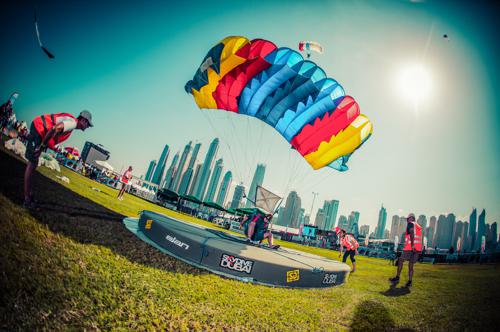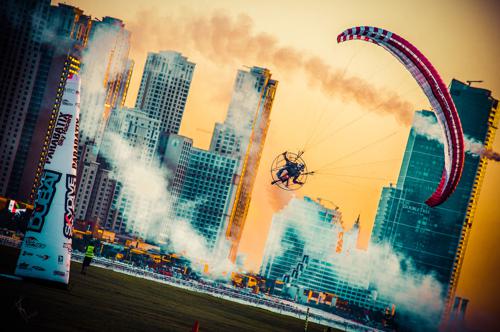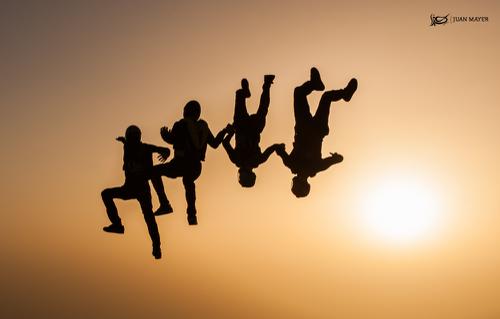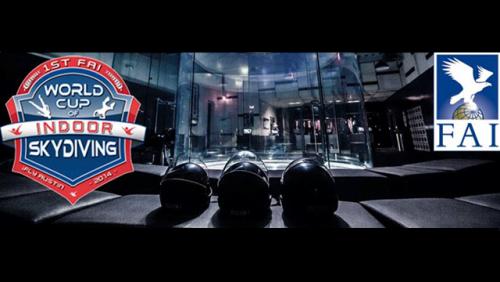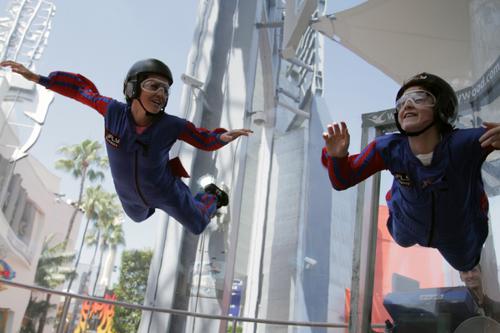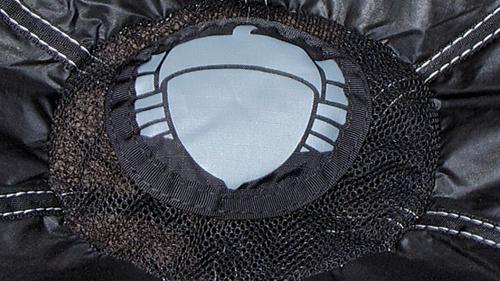Dubai International Parachuting Championships - Day 3 & 4
All Imagery by Kuba Konwent
5th DIPC: Accuracy, VFS, 4-ways and CF flying hard
The fifth Dubai International Parachute Competition is already started and going on from sunrise to sunset. The dropzone is closed for all commercial activities (AFF, tandems, fun jumps), but a collection of jumpships including 2 helicopters, 2 Twin Otters, 1 Cessna Caravan are going up and down with short breaks for refuel. The essence of skydiving community is just here.
Accuracy in the very center
As the swoop pond will be silent for a couple of days, accuracy landings attract most of audience’s attention. Some say that it is a discipline which is not under intense R&D; but apparently it’s very exposed and divided between group and individual competition and also between seniors and juniors.
- Some rules changed since last year - says Matthias Maushake, Head of Manifest - We now allow Juniors to jump with Seniors in one group, so that’s one of the main changes. We try to adjust competitions to the reality and we observe how it goes to be able to come up with conclusions.
- Everything is great, the discipline is getting bigger, canopies are being improved. I look forward to the future of Accuracy - claims Saeed Alhashimi from Judges Comittee.
Womens Team Accuracy Results
Pos
Nat
1
2
3
4
5
6
7
8
Total
1
Belarus
5
5
5
2
2
5
4
5
33
2
Russia
6
7
0
1
10
4
1
8
37
3
China
19
3
5
5
8
4
3
6
53
4
Poland
10
10
6
3
6
12
19
10
76
5
France
25
18
18
6
26
19
8
8
128
Mens Team Accuracy Results - Top 5
Pos
Nat
1
2
3
4
5
6
7
8
Total
1
Slovenia
3
3
4
1
2
0
2
2
17
2
Italy
7
3
1
5
1
0
2
2
21
3
Russia
4
2
0
2
0
7
6
1
22
4
Hungary
2
4
3
4
2
2
6
3
26
5
China
4
0
2
3
6
5
1
7
28
What Lies Ahead for VFS?
For a very long time before the competition only the Canadian VFS team was registered. Just a few days before DIPC one additional team from Poland declared their attendance, making it one of the disciplines where there are fewer entries than previous years.
- It requires a lot of comittment and patience. Having an average of 10 points is a huge effort not only for one person, but for four and of course the cameraman - says member of Canadian team member - We’re happy with the 48p. we have in total now. However it would be perfect if we had more teams to compete with. Having only 2 teams on board, it’s not the same, but of course we will do our best to have the highest score possible.
We have also asked the Polish team how they feel during their first competition: "We only have 2 months of training as a team. The atmosphere is great and we aim for getting some experience. We don’t expect a miracle to happen but it’s important to compete with the best." - says capitan of Polish representation, Marek Nowakowski.
Windy dropzone and Swoop League
Saturday’s afternoon was already quite windy. Accuracy competitors were released for the rest of a day. Sunday morning wind was around 15-17 knots, so competition started around 11am. Accuracy still on hold, but everyone else is doing their thing.
Also at the Desert Campus Swoop League is going on. Today new category was introduced to the competitors and public: “max-speed” which is a combination of Speed and Distance. Competitors are supposed to enter with a maximum speed and fly as far as they can. Here is how it looks like:
Post użytkownika Performance Designs.
4-ways Open/Female
Formation Skydiving is a classic. You can see 4-way teams training on the creepers everywhere, coaches circuling around and giving hints. We asked Karla Cole from Judges Committee how does she feel about FS skydiving during this competition.
- It’s a classic discipline, I don’t think it will ever going to be less popular. There were disciplines that have died already, as Skysurfing, but FS is not one of them. I’m a little bit worried about VFS, because it really is awesome and yet… we only have 2 teams registered. Only time will show the future. - says Karla. Asked about FS and VFS development responds: Well, definitetly VFS requires more high skills and of course the mutual work between the team and cameraman. It’s easier to catch all grips from above than in VFS where you have to be sometimes headup, sometimes headdown and know better how to show the grip to the judges. Sometimes only one point decides who is the winner. The same for FS.
And indeed - In FS Canadian and Belgium team have both 88 points in total. That’s the sport spirit we’re all looking for in skydiving!
More results can be found at both Omniskore's and EAF's websites

